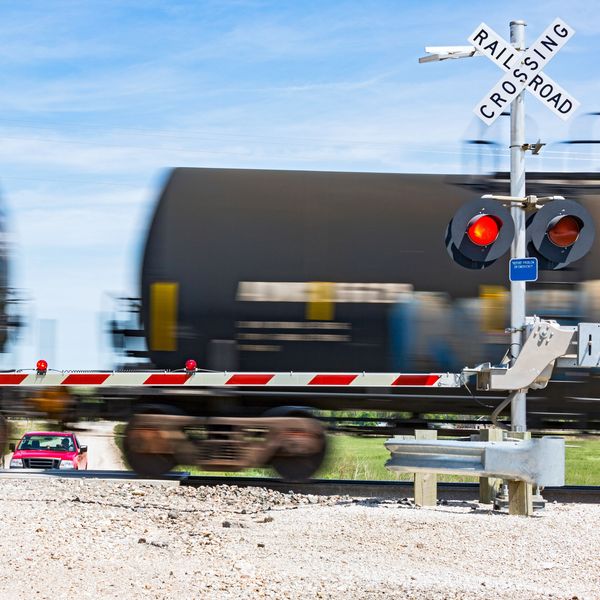Navigate Railroad Crossings Safely

It takes a 35,000-pound tractor-trailer at least 14 seconds to traverse a single set of train tracks. Trains cannot stop that fast. It takes a 6,000-ton train traveling at 55 mph, a mile or more to completely stop moving. That is why railroad crossings are a dangerous territory for truck drivers and should be approached with caution.
The U.S. Department of Transportation's (DOT) Federal Railroad Administration estimates that tractor-trailers and trains collide more than nine times per week. That doesn't include many of the near misses.
Use these tips to stay safe when you approach a railroad crossing:
1. Know the types of crossings.
Active crossings include warning devices like flashing red lights, bells and/or gates. Passive crossings don't have warning devices.
2. Don't be fooled.
Active crossings aren't safer than passive crossings. Nearly half of all collisions happen at a crossing with properly functioning warning devices.
3. Watch the signs and road.
Look for the crossbuck sign, pavement markers and stop bars indicating train tracks are ahead
4. Always assume.
Always assume a train is coming, even on rarely used tracks.
5. Know what to do at the crossing.
Stop anywhere between 15 to 50 feet before the tracks. Turn on your four-way lights. Turn off all fans and music. Roll down your windows. Listen and look both ways. Do so twice if crossing dual tracks.
6. Never ignore warning signals.
Driving around lowered gates is illegal.
7. Never race a train.
It's difficult to judge the speed of an approaching train.
8. Develop a "just-in-case" plan.
If you see a train while crossing the tracks, keep going, even if the warning gates are down. The gates will break way on impact by design.
9. Watch for low ground clearance.
Always keep an eye on clearance heights, especially if driving a lowboy, car carrier, moving van or possum-belly livestock trailer. Make sure all landing gear is in the "up" position.
10. Try a new route.
If possible, plan your route to avoid railroad crossings.
Bonus tip: Make sure you get adequate rest and obey all mandatory Federal Motor Carrier Safety Administration (FMCSA) hours-of-service rules so you're alert on the road.
If you get stuck on the tracks, get out of the truck immediately. Move away from the crossing in the direction of the approaching train to avoid flying debris. Call the emergency phone number posted at the tracks. Report your location and the DOT crossing number. If you don't see a posted emergency phone or DOT crossing number, call 9-1-1.

